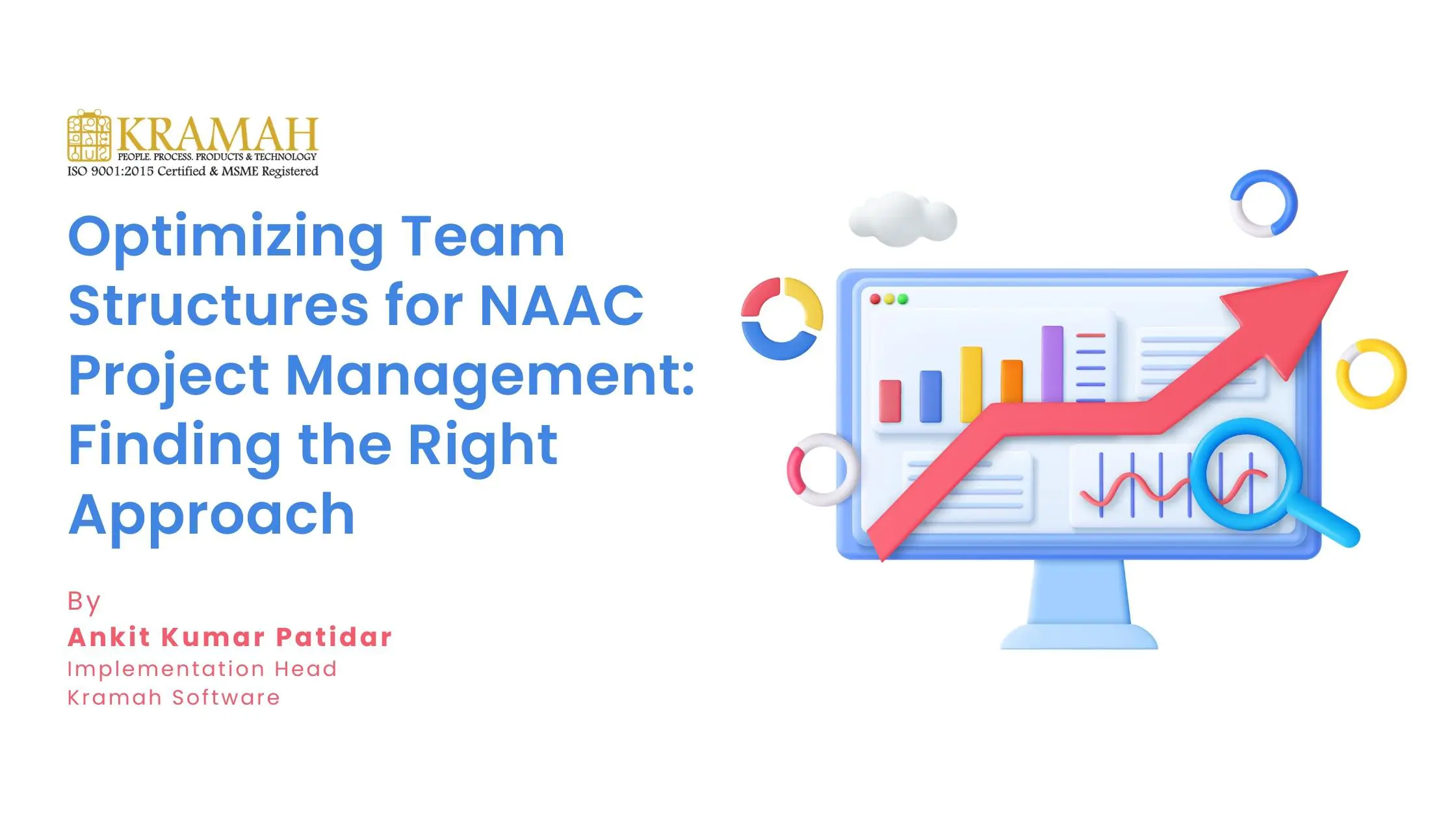Optimizing Team Structures for NAAC Project Management: Finding the Right Approach
By,Ankit Kumar Patidar

The team structure plays a crucial role in the effective management of the NAAC (National Assessment and Accreditation Council) project. Here are three possible team structures for NAAC:
Two-Level Architecture:
- Criteria Heads: Each criterion has a designated criteria head responsible for collecting data from all relevant departments. They coordinate with department heads and ensure the data is accurate and complete. They also act as coordinators for their assigned criterion.
- IQAC Head: The IQAC head is responsible for receiving and reviewing the data submitted by the criteria heads. They ensure the overall quality and consistency of the data before final submission to the NAAC portal.
Advantages:
Simple and easy to implement for smaller organizations.
Requires minimal coordination and communication between team members.
Considerations:
Criteria heads may have an additional burden as they handle data collection and coordination simultaneously.
Limited oversight and verification of data by multiple layers of management.
Three-Level Architecture:
- IQAC Head: The IQAC head oversees the entire NAAC project and is responsible for the final approval of data. They ensure compliance with NAAC guidelines and standards.
- Criteria Heads: Each criterion has a dedicated criteria head who verifies and checks the data collected by department heads. They have a strong understanding of the assigned metrics and ensure data accuracy.
- Department Heads: Department heads are responsible for collecting and submitting data from their respective departments to the criteria heads. They play a vital role in ensuring accurate data collection.
Advantages:
Clear division of responsibilities among IQAC head, criteria heads, and department heads.
Criteria heads provide an additional layer of verification before data submission.
Considerations:
Requires criteria heads to possess in-depth knowledge of all assigned metrics, which may increase their workload.
Effective communication and coordination between department heads and criteria heads are crucial.
Four-Level Architecture:
- IQAC Head: The IQAC head oversees the project and ensures the final approval of data.
- Criteria Heads: Each criterion has a criteria head responsible for reviewing the data submitted by department heads.
- School/Department Heads: These heads are responsible for supervising and guiding departmental users in collecting and preparing data.
- Departmental Users: Users assigned to specific departments collect and prepare data according to the given SOPs.
Advantages:
Clearly defined roles and responsibilities at each level.
Departmental users ensure accurate data collection at the departmental level.
Considerations:
Department heads must have a strong understanding of the assigned metrics and SOPs to ensure data accuracy.
Additional layers of approval may introduce delays in the data submission process.
The choice of team structure should consider the organization’s size, complexity, coordination requirements, and the experience and capability of department heads. It is essential to strike a balance between efficiency and data accuracy while ensuring effective communication and coordination among team members.
